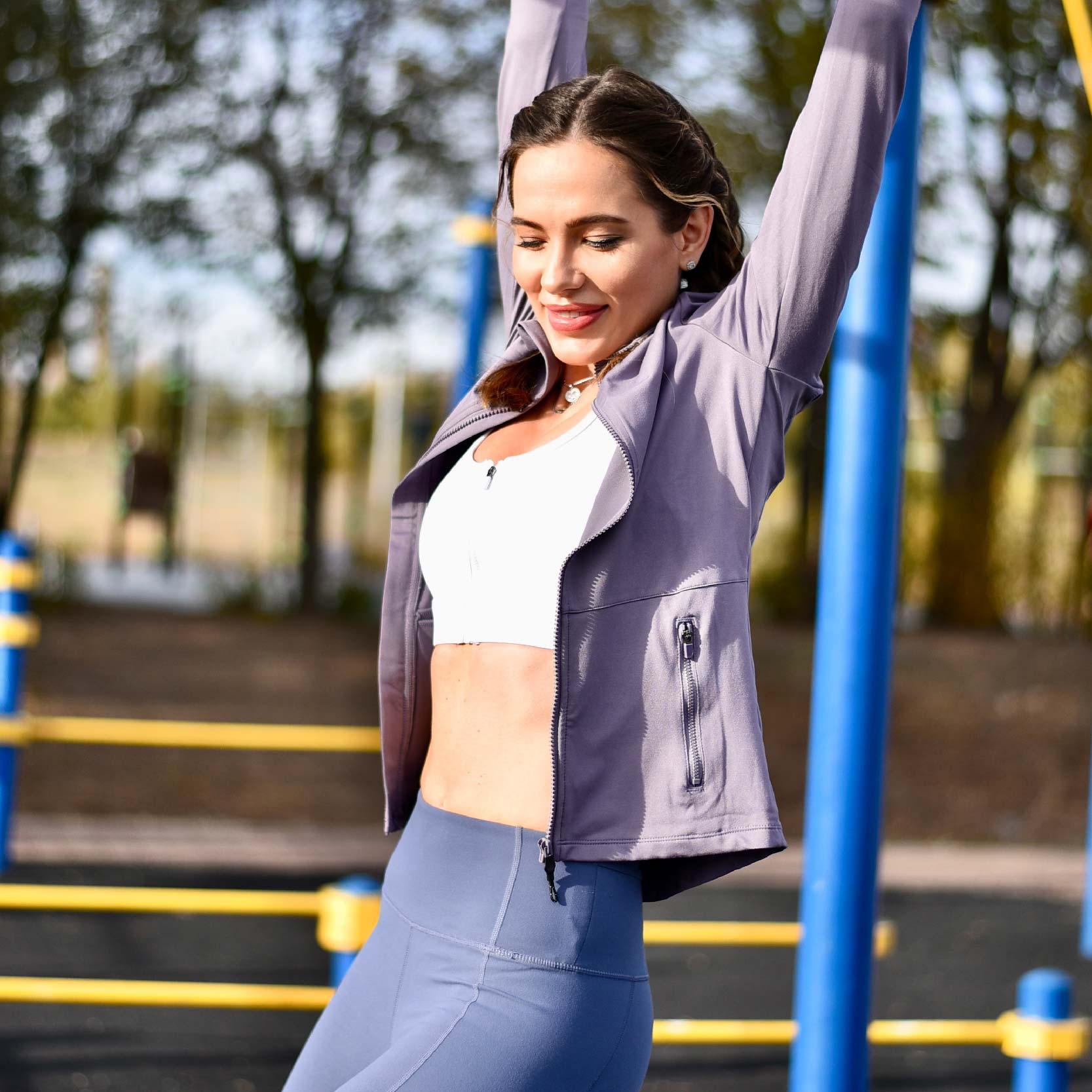Yoga: Fight Stress and Find Serenity

Yoga is an ancient practice that helps to reduce stress and promote serenity. It combines physical postures, breathing exercises, and meditation to bring balance to mind and body. Practicing yoga on a regular basis can help to reduce anxiety and stress, as well as increase energy levels, improve sleep, and boost overall well-being.
What is Yoga?
Yoga is an old physical, mental, and spiritual practice originating from India. It is a holistic health approach involving physical postures (asanas), breathing exercises (pranayama), and meditation. The goal of yoga is to cultivate balance, strength, flexibility, and relaxation in the body, mind, and spirit.
Ways that yoga reduces stress and anxiety
Are you feeling overwhelmed, anxious, or stressed out? You're not alone. Many people are struggling with stress and anxiety. Fortunately, there is a natural and effective way to help reduce these feelings and create more balance and peace in your life. Yoga is a powerful practice that can help reduce stress and anxiety levels in a variety of ways. This blog post will explore proven ways yoga can help reduce stress and anxiety. So, if you're looking for a natural and effective way to cope with stress and anxiety, read on!
1.It quiets the mind
Yoga is an excellent way to reduce stress and anxiety because it helps to quiet the mind. When we practice yoga, we are encouraged to stay in the present moment rather than ruminating on the past or worrying about the future. This can help us break free from unhealthy thought patterns and focus instead on our breath, body, and the present moment. By focusing on our breath and physical movements, we allow ourselves to become mindful of our thoughts and more easily let go of negative or unhelpful ones. By simply observing our thoughts without judgment, we can break away from self-critical patterns and develop a more positive mindset.
2.It relaxes the body
Yoga is an incredibly effective way to relax and reduce stress. Through gentle stretching, yoga helps to reduce tension in the muscles and promote relaxation in the body. In addition, deep breathing and visualization techniques help to calm the body and mind, allowing for physical and mental relaxation.
When practicing yoga, you can focus on slow, controlled movements that help to target muscle tension. During this process, your body will begin to relax and release any built-up stress or tension. As your body releases tension, your mind will be able to become calmer and less stressed.
Yoga also promotes relaxation through relaxation poses such as Child's Pose and Corpse Pose. These poses help the body relax deeply and allow for greater physical relaxation. Focusing on these poses allows the body to let go of stress and tension truly.
Ultimately, yoga is an effective way to relax the body and reduce stress. Through gentle stretching and relaxation poses, yoga helps to loosen tight muscles and promote physical relaxation. By using deep breathing techniques, yoga can also help to relax the mind and create a feeling of calmness. Therefore, incorporating yoga into your daily routine can reduce stress and help you enjoy a more relaxed lifestyle.
3.It increases flexibility
Yoga is known for its ability to improve flexibility, both physically and mentally. Improved flexibility increases the range of motion, which can help reduce stiffness in the body and prevent injuries. Stretching and deep breathing during yoga also help relax the muscles and joints, which can lead to improved posture and a better sense of balance. When done regularly, yoga can help to maintain and increase flexibility, leading to greater overall strength and mobility. Additionally, stretching during yoga can help the mind become more open and accepting of new ideas and perspectives, allowing for greater mental flexibility.
4.It improves circulation
Yoga helps improve circulation by facilitating the flow of oxygen and nutrients throughout the body. By stretching, compressing, and twisting, the body, stimulates the circulatory system, which helps to increase blood flow. Improved circulation means that the heart can pump more efficiently, which can help reduce stress and anxiety levels. Additionally, increased blood flow helps to flush out toxins and promote healing, which further helps to reduce stress levels. All in all, yoga can help you relax and keep your circulatory system healthy.
5.It helps you focus
Yoga has improved concentration and focuses by calming the mind and allowing for heightened awareness. When practiced regularly, yoga can help you better manage distractions and stay focused on the task at hand. By deepening your breath and increasing your mindfulness, you can become more aware of internal and external stimuli and better prioritize your thoughts and emotions. With the help of yoga, you can develop clarity, hone in on the present moment, and make decisions with clarity and confidence. It can also help reduce racing thoughts, so you can focus on what's important.

Yoga safety measures
Yoga is a perfect way to stay fit, healthy, and happy. However, the practice of yoga can be dangerous if not done correctly. To ensure your safety, following some basic safety measures when practicing yoga is important. Following these simple safety measures will help you stay safe and healthy while enjoying the benefits.
1. Warm Up: Warm up your body with some light movement before beginning your yoga practice. This can include simple stretches, jogging, or even walking.
2. Listen to Your Body: Listen to your body and make sure you are not pushing it too far. You should be able to do the poses comfortably and with ease.
3. Use Props: Use props such as blocks, straps, and bolsters to help support your body in certain poses. Using the right props for the workouts will help avoid different injuries.
4. Breathe Deeply: Make sure to take deep, full breaths throughout your practice. This will help you to relax and stay focused.
5. Stay Hydrated: Make sure to stay hydrated throughout your practice. Drinking plenty of water before, during, and after your practice will help keep your body functioning optimally. Hydration contributes to the functionality of the brain.
6. Wear Comfortable Clothing: Wearing comfortable clothing that is not too tight or restrictive will help you move more easily and safely.
7. Don't Push Too Far: Don't push yourself too far in your poses if a pose is too challenging, back off and try a modified version.
8. Take Breaks: Take a break if you are feeling fatigued or overwhelmed. It's okay to take a break and return to a pose when ready.
9. Get Professional Help: If you have any physical limitations, seek professional guidance from a qualified yoga teacher. They can help you modify poses to suit your needs.
10. Wear the appropriate clothing: Make sure that your clothes are loose and comfortable and don't restrict your movement.
Finally, practice yoga in a safe, comfortable environment. Make sure that the space is well-ventilated, and that you have plenty of space to move about freely.
Yoga Poses For Stress Relief ( Include Pictures )
Yoga is a perfect way to keep your body and mind healthy. It can help you relax, reduce stress, and gain inner peace. Yoga is a great place to start if you're looking for a way to combat stress. This blog post will discuss the top five yoga poses to help you fight stress and find serenity. With regular practice, you'll be able to fight off those pesky stressors in no time. So, get ready to learn how to use the power of yoga to achieve inner peace and relaxation.
1.Child's Pose
To get into the pose, start kneeling on the floor with your knees hip-width apart and toes touching. Then slowly lower your torso onto your thighs and stretch your arms out in front of you with your palms facing down. Rest your forehead on the floor and let your breath become steady and deep. Remain in this position for five to ten breaths or till it feels comfortable for you.
If Child's Pose is too difficult for you at first, there are variations available that may be more suitable for your needs. For example, you can place a blanket or bolster under your hips for additional support. You can also use a strap around your ankles or feet to keep your legs together if needed. Experiment with different variations until you find one that works best for you.

Source: photo from online
2. Downward Facing Dog
Start in a tabletop position on your hands and knees to get into the pose. Ensure that your wrists are directly under your knees and your shoulders are under your hips. From here, press your palms into the mat and tuck your toes as you lift your hips up and back. Your goal is to straighten your arms and legs while keeping your hips high. The backs of your legs should remain active. Keep your neck long and look either between your legs or slightly forward. Hold the pose for five breaths before releasing and returning to the tabletop position.

3.Cobra Pose
To do the Cobra Pose, start by lying down on your stomach with your legs straight and your arms resting at your sides. Bring your hands onto the floor next to your shoulders and press your palms into the ground, making sure that your fingers are spread wide and your elbows are bent.
Slowly arch your back and raise your chest off the ground. Engage your core muscles and hold this pose for five deep breaths before slowly returning to the starting position. Make sure you don't overarch your back or lift your head too high as this can strain your neck muscles.
The Cobra Pose is a great way to build strength in your back muscles, increase flexibility, and reduce stress and tension in the body. Try adding this pose to your yoga practice for a refreshing and energizing experience!

4.Cat-Cow Pose
To begin, come onto your hands and knees with your hands directly under your shoulders and your knees under your hips. Exhale and round your spine toward the ceiling, like a scared cat, tucking your chin in toward your chest. Inhale and arch your back as you look up to the ceiling like a content cow. Continue to alternate between these two poses for several breaths.
Take your time with this pose, allowing yourself to move fluidly between the two poses and breathe deeply. Relaxing into the pose will help release any physical or emotional tension stored in your body. If you're feeling extra tense, you can add some gentle neck rolls or eye exercises to alleviate stress.

Source: photo from online
5.Triangle Pose
To get into Triangle Pose, begin standing tall with your feet wide apart, and toes pointed outward. Reach both hands toward the ceiling, exhale as you bend at the waist, and stretch your right hand down to the floor near your right foot. As you do this, keep your hips facing forward and extend your left arm toward the sky, aligning your shoulder blades and creating a straight line from head to toe. Hold onto this pose for 30 seconds, focusing on your breath and allowing your body to relax into the stretch. Be sure to switch sides for an equal amount of time so that each side receives a balanced stretch.
The Triangle Pose can be beneficial for relieving tension in the back and shoulders and strengthening the core muscles. It can help to reduce anxiety and fatigue while restoring balance in the body. Try practicing this pose every day for improved physical and mental well-being!

Source: photo from online
Conclusion
In conclusion, practicing yoga can effectively reduce stress and help you find a sense of serenity. Yoga is an ancient practice that has been used for centuries to promote physical and mental well-being. It consists of physical postures, breathing exercises, and meditation. Regular yoga practice can help fight stress and bring about a sense of serenity and balance. Safety measures such as proper instruction and support, appropriate clothing and props, and listening to your body are essential when practicing yoga. The benefits of yoga include improved physical health, mental clarity, and emotional balance.





